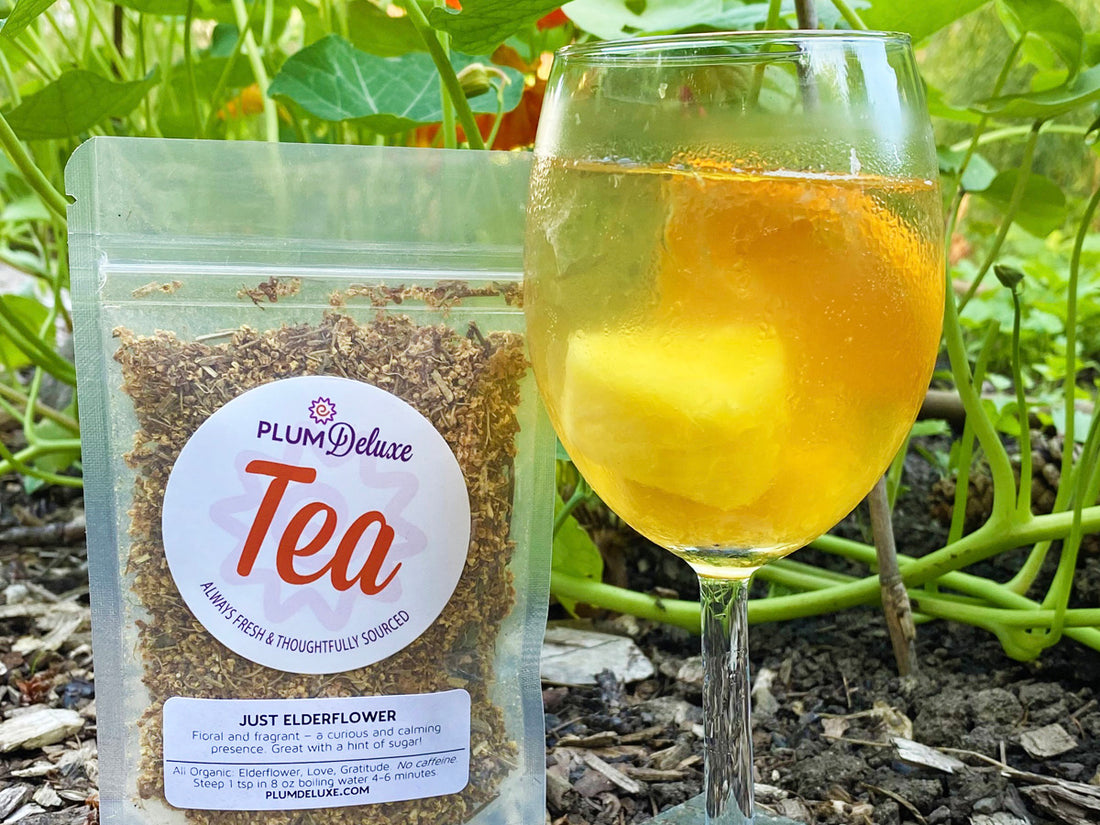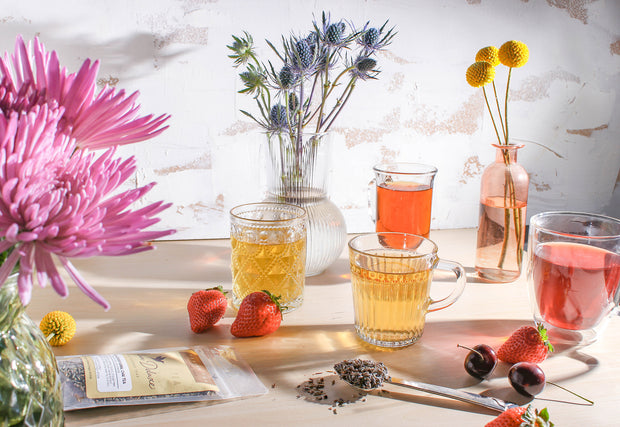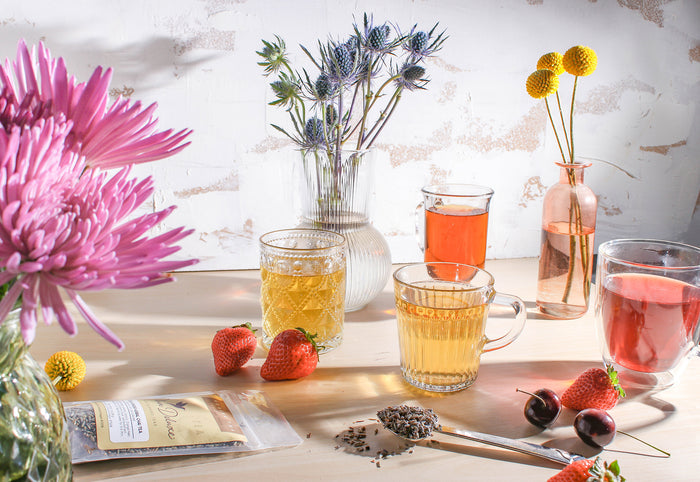
The first thing you'll need to do is prepare your elderflower tea. I love the earthy-sweet floral notes of elderflowers, and I think they pair spectacularly with white wine. They have a light flavor, though, which means we'll need a strong infusion so they don't get overwhelmed by the other ingredients.
To get the right strength, I steep 4-6 teaspoons of Just Elderflower tea in 2 cups (16 ounces) of boiling hot water, then let it sit for about 5 minutes before straining. If you're using a Perfect Tea Maker, it holds just the right amount of liquid. If you have time, you can cold brew the elderflowers or steep them hot and let them cool down, but it's not necessary. I usually hot brew the tea and pop it right in with the other ingredients; the fridge time will cool it down just fine.
Next, you'll prepare your fruit – an integral part of any sangria. For this recipe, pineapple and orange are going to be the perfect partners to the white wine and elderflower. Slice them up, removing the skin of the pineapple first, of course. You can peel the orange before slicing, too, to make it easier to eat later. (Because why wouldn't you eat the fruit after it's been chilling in all that wine and tea?)
I like lightly sweet dry white wines, so the Viognier from my favorite local winery was the perfect choice for this elderflower sangria. You can use any white wine you'd like for this recipe, though; it's very versatile and forgiving that way. I've found that Vidal Blanc works wonderfully, and I think a Pinot Gris or even a Chardonnay would do well. If you really want to up the sweetness factor, try a Gewurztraminer.

A note about sweetness: You don't have to add sweetener to your sangria. I know a lot of recipes call for it, and many folks like their sangria on the sweeter side (no judgement from me). But if you're trying to watch your sugar or just don't like sweet things, I think the fruit imparts enough natural sweetness to this recipe. If you do want to sweeten things up, though, honey dust or maple dust are the way to go. They both pair well with the other ingredients without being sickly sweet, and the maple dust has a lower glycemic index for those who need it.
To serve your elderflower sangria, put ice in your favorite glass, pour in some sangria, and make sure you scoop out some of that delicious wine-soaked fruit. Top it off with a bit of seltzer if you like; I tried it with some grapefruit seltzer and found it very refreshing.
This recipe makes a nice, big batch that will keep well in your fridge for several days. You can easily cut it in half, though, if needed.

Elderflower White Wine Sangria
Ingredients:
- 2 cups strongly brewed Just Elderflower tea
- 4 tablespoons maple dust
- 1 large orange
- 1 small pineapple
- 2 bottles Viognier or preferred white wine
- 1/2 cup St. Germain elderflower liqueur (optional)
- ice
- seltzer water (optional)
Directions:
Add Just Elderflower tea and honey dust to a large pitcher. Stir well to dissolve honey dust.
Slice orange and pineapple and add to pitcher. (You’ll want to trim the skin off the pineapple first.) Use a wooden spoon to give the fruit a bit of a muddle to get the juices going.
Add wine and optional St. Germain to the pitcher and stir.
Cover and place in the refrigerator for 4-6 hours or overnight.
To serve, scoop some fruit out of the pitcher and into a glass along with ice. Fill glass with sangria and top with seltzer for a touch of bubbly if you'd like.

![Spring Break Tea Variety Pack [6-Pack Variety of Flavors]](http://www.plumdeluxe.com/cdn/shop/files/spring-break-pack.jpg?v=1740682266&width=165)















